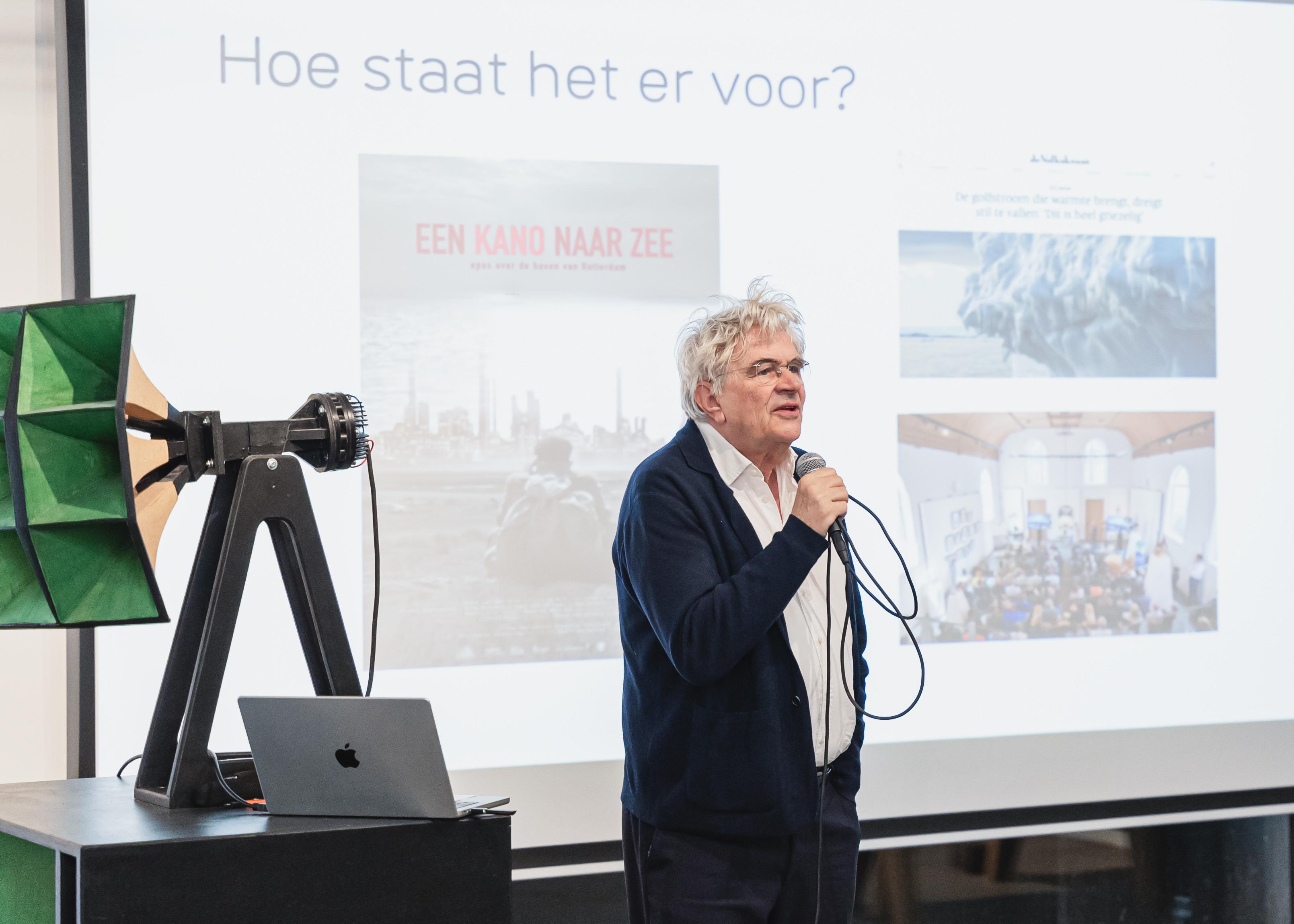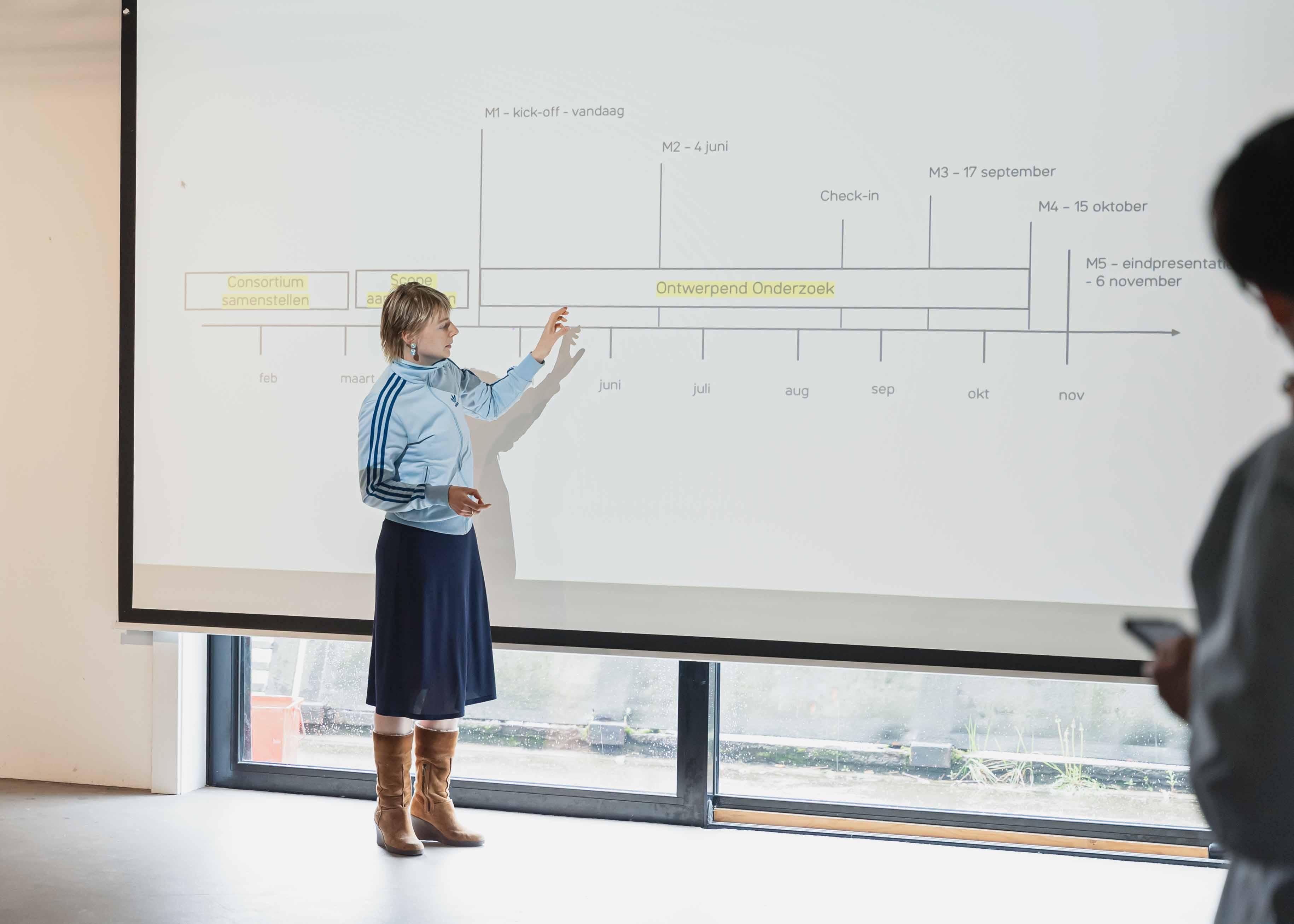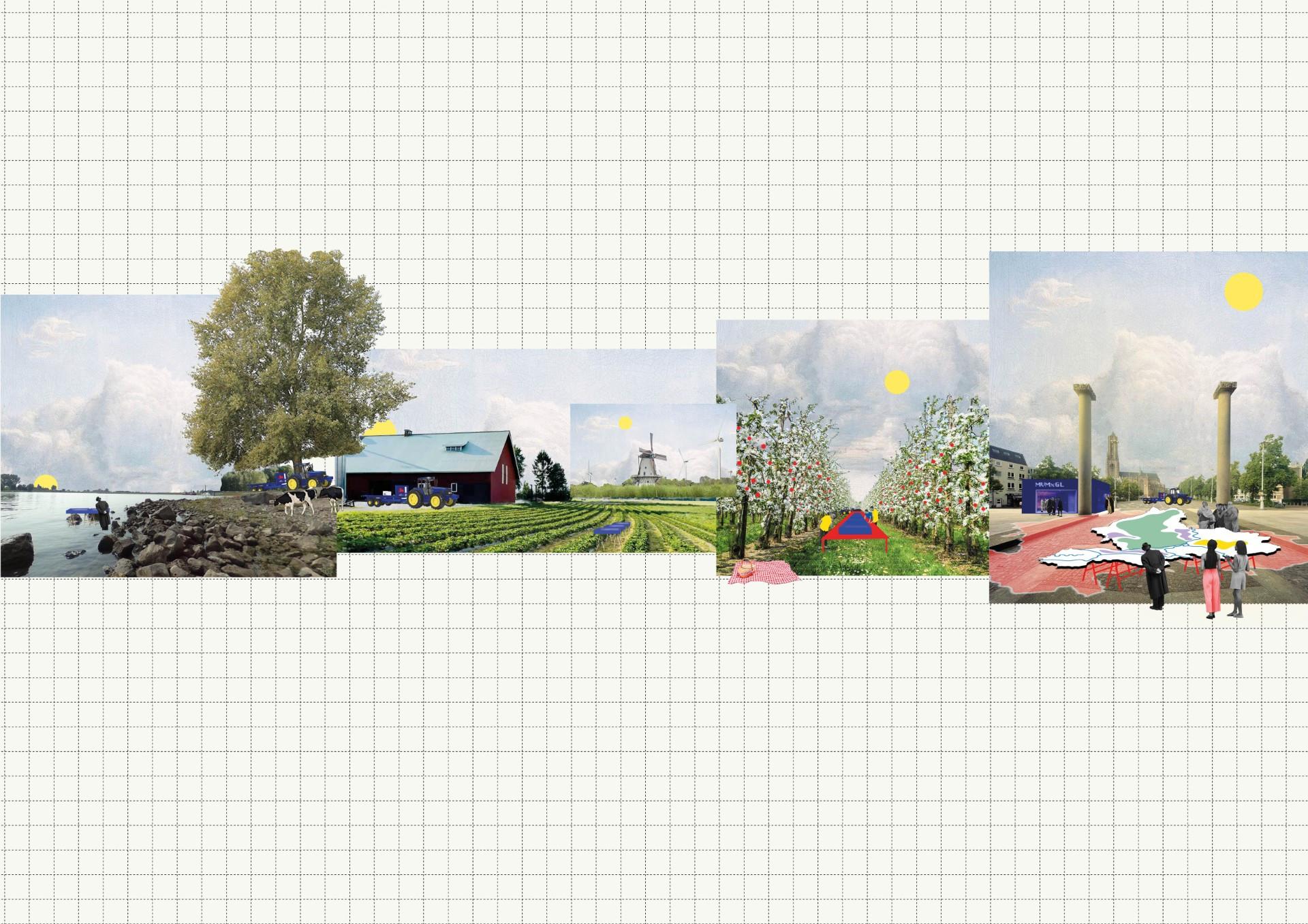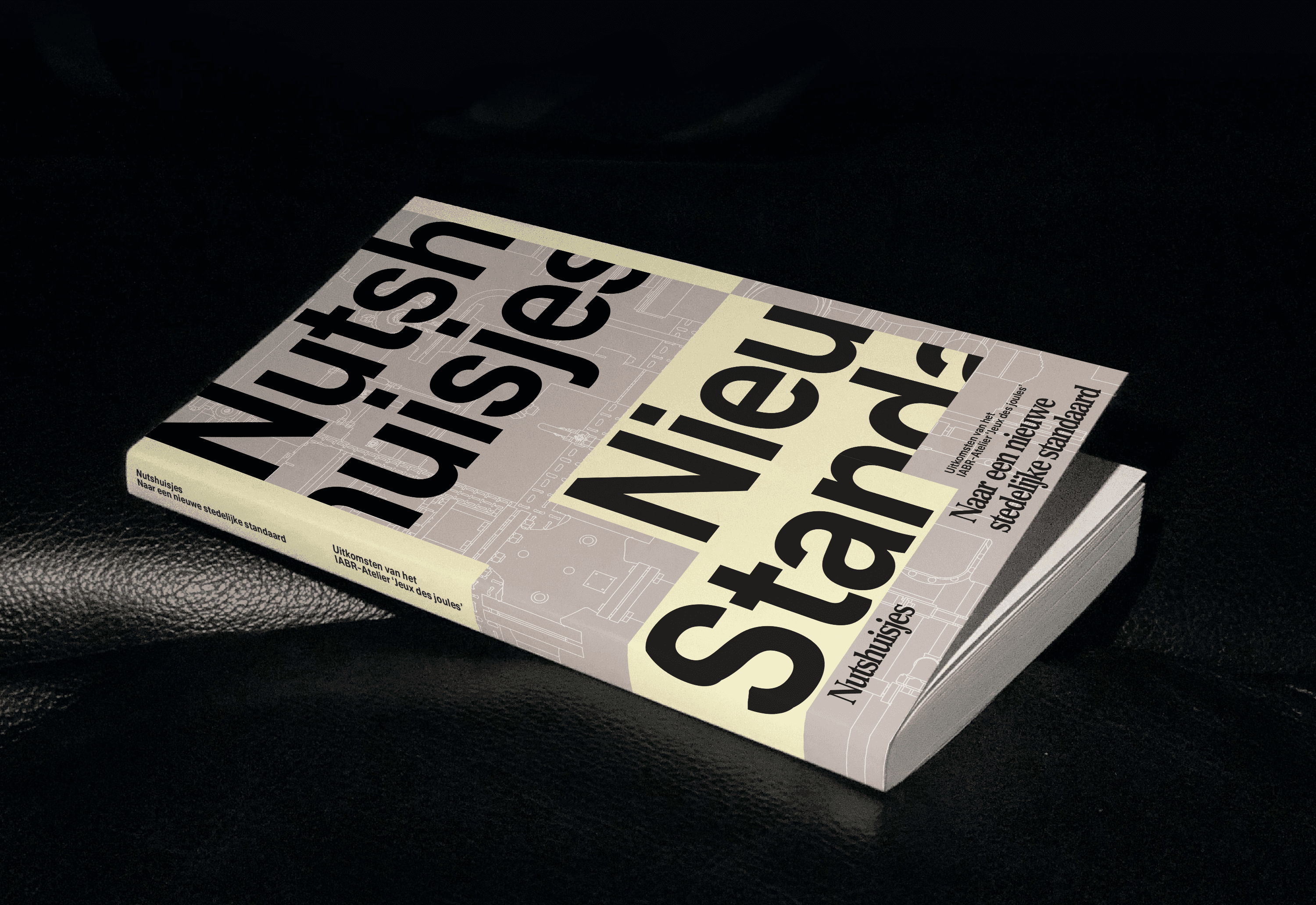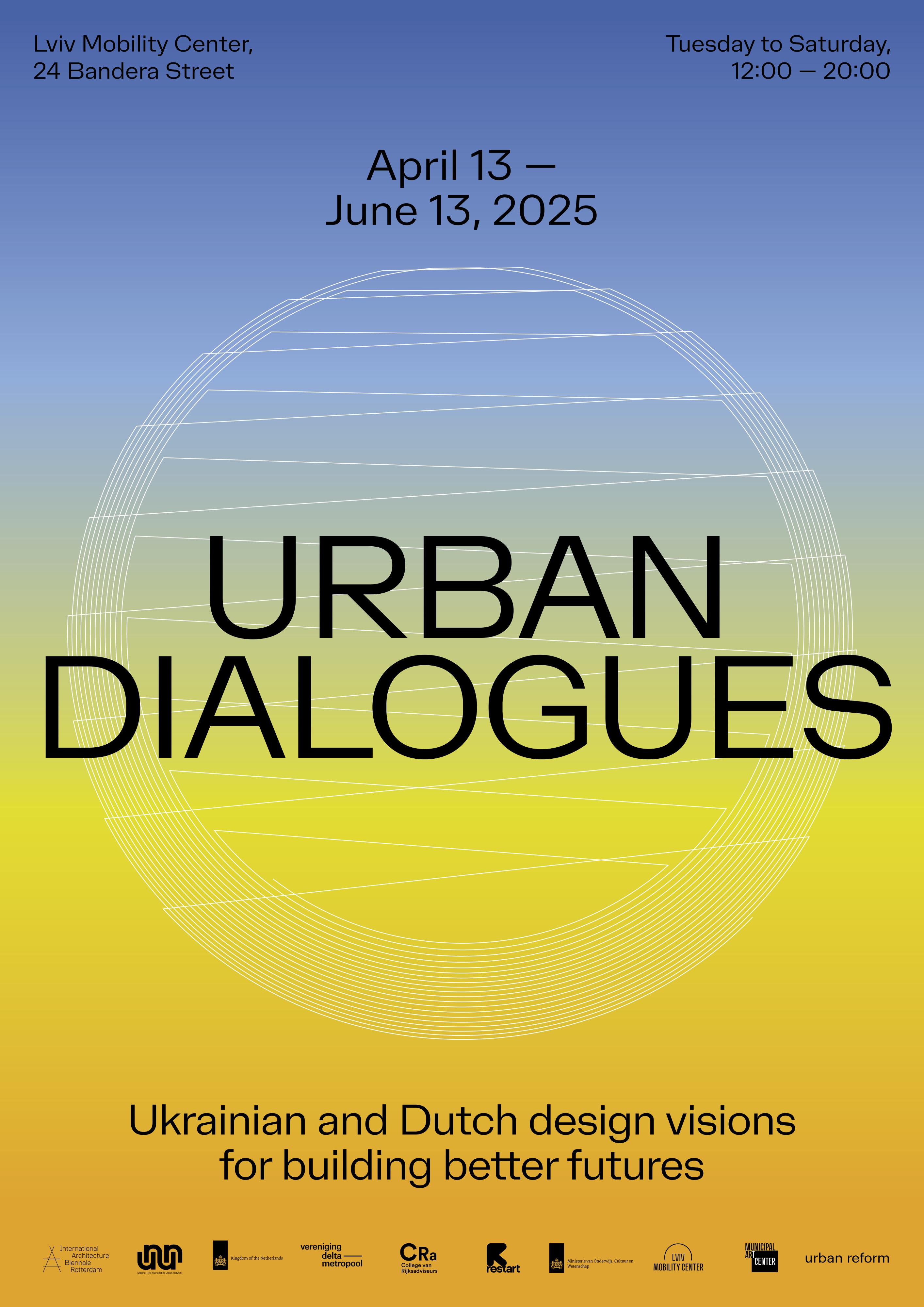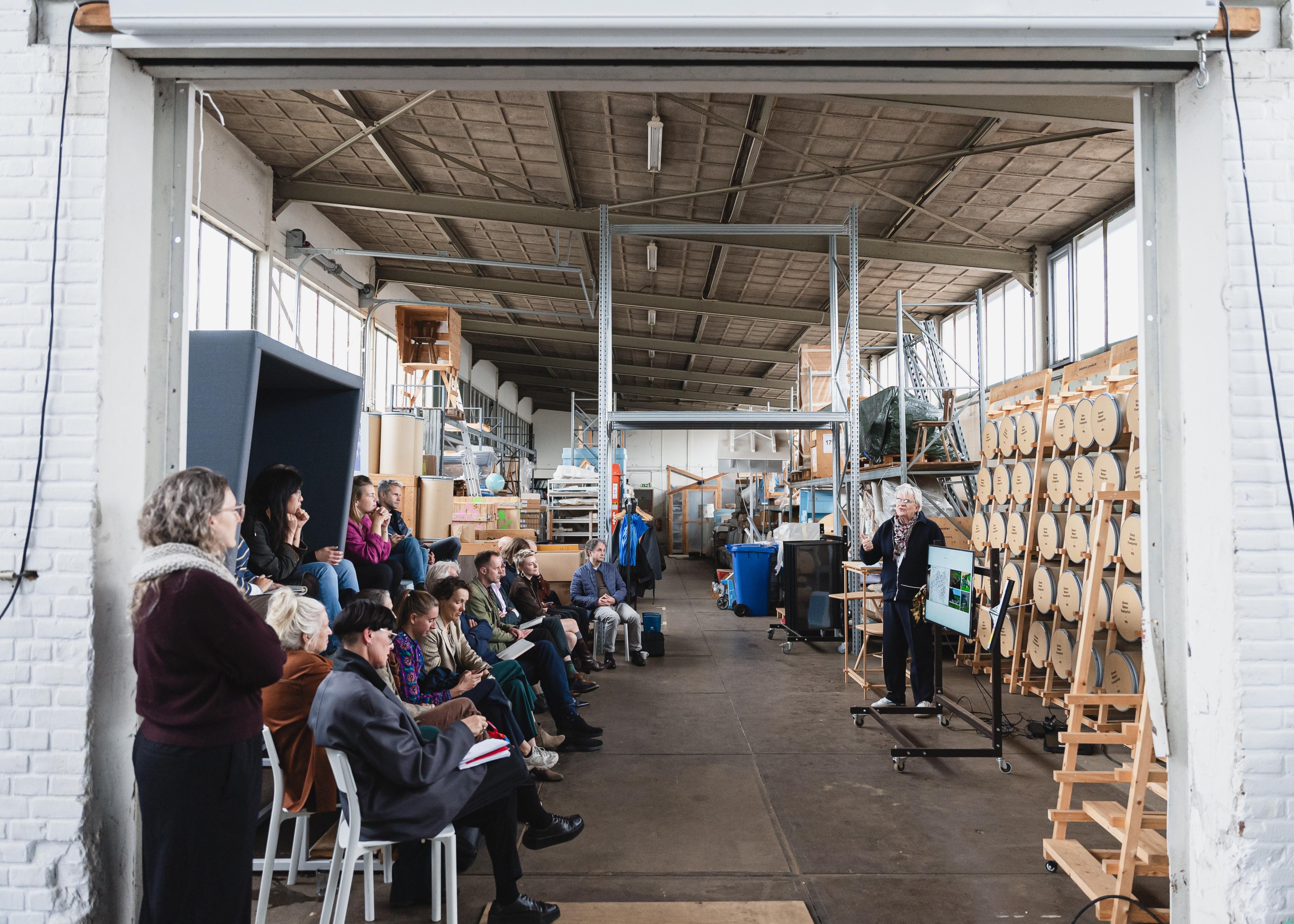On 17 September, the third working session of the IABR–Atelier Delta Rijnmond–Drechtsteden 2100 took place at the Keilepand in Rotterdam. The day was devoted entirely to the Rotterdam port complex: an economic engine and spatial anchor point in the South Holland delta that is increasingly under pressure from sea-level rise, land subsidence, and more extreme river discharges. The session approached the port from historical, economic, and spatial perspectives. The focus was on how it might change given the broader challenge of climate adaptation.
In the morning, Bart Kuipers (lecturer in economics, Erasmus University Rotterdam), Rens Wijnakker (researcher and designer, FABRICations), and Maaike Dalhuisen (senior strategist, Port of Rotterdam) each gave a lecture. Together they sketched the port in transition toward a sustainable future.
Bart Kuipers opened with an analysis of the port complex as an economic and geographic system. Using the classical model of Taaffe, Morrill & Gould (1963), he showed how the port developed from a medieval trading place into a modern industrial hub. According to Kuipers, Rotterdam is now moving into phase 7, the sustainable port city, characterized by supraregional spatial and international dimensions. The port system is highly complex and, as an inseparable network, extends far beyond the South Holland delta.
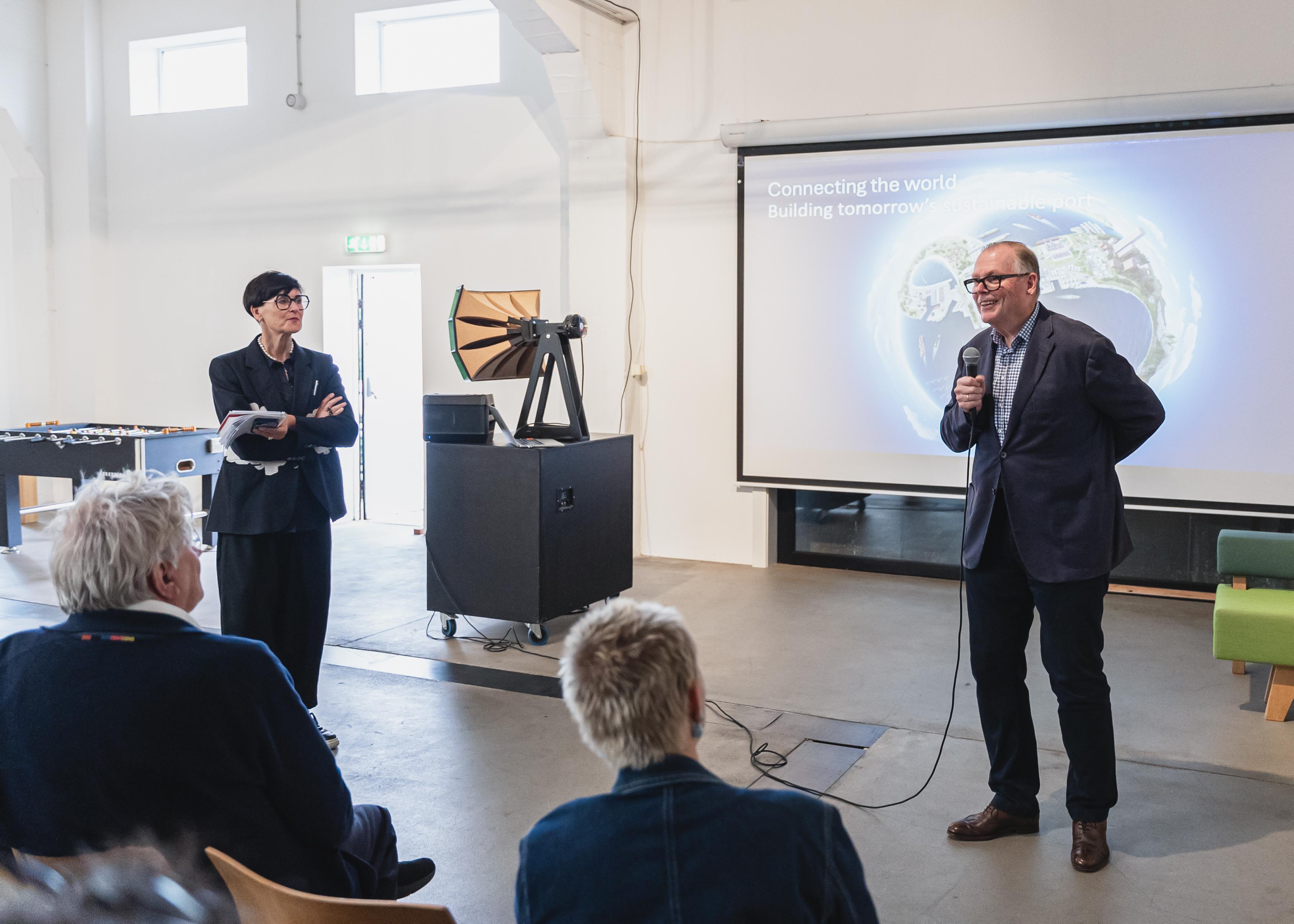
Next, Rens Wijnakker outlined the metabolism of the port: the physical, energetic, and economic flows that connect Rotterdam to Northwest Europe and beyond. The port is part of a larger network, the Rotterdam – Antwerp – Ruhr cluster, which in 2025 functions as a single integrated system. However, this system is under pressure. Climate change reduces navigability. Saltwater intrusion and storms threaten accessibility. The energy transition toward fossil-free and circular creates major spatial demands. Research by FABRICations showed how the four scenarios for 2050, outlined by the Port of Rotterdam, translate into land use, ranging from Regional Well-Being with a surplus of 550 hectares to Connected Deep Green with a deficit of 530 hectares. ‘The port is in a double transition,’ Rens stated. ‘We have to dismantle old systems while new ones are only just emerging. This leads temporarily to double use of space. This requires design strategies that allow for parallel realities.’
Finally, strategist Maaike Dalhuisen outlined the port of 2050 through four scenarios: Connected Deep Green, Regional Wellbeing, Protective Markets, and Wake-Up Call. The balance between fossil and renewable energy differs in each scenario, but the volume of container handling remains stable. The fossil industry shrinks sharply in all cases, from 40 per cent today to between 0 and 8 per cent in 2050.
In the afternoon, the three design teams – PosadMaxwan, H+N+S, and De Urbanisten – presented their interim results. Their proposals demonstrate how spatial design strategies, currently in development, can contribute to a climate-resilient and above all water-secure port region. During the thematic breakout sessions, participants engaged with experts in smaller groups to discuss the role of economy, space, and ecology in the port of the future.
The next atelier will take place on 15 October and will focus on City and Hinterland.
